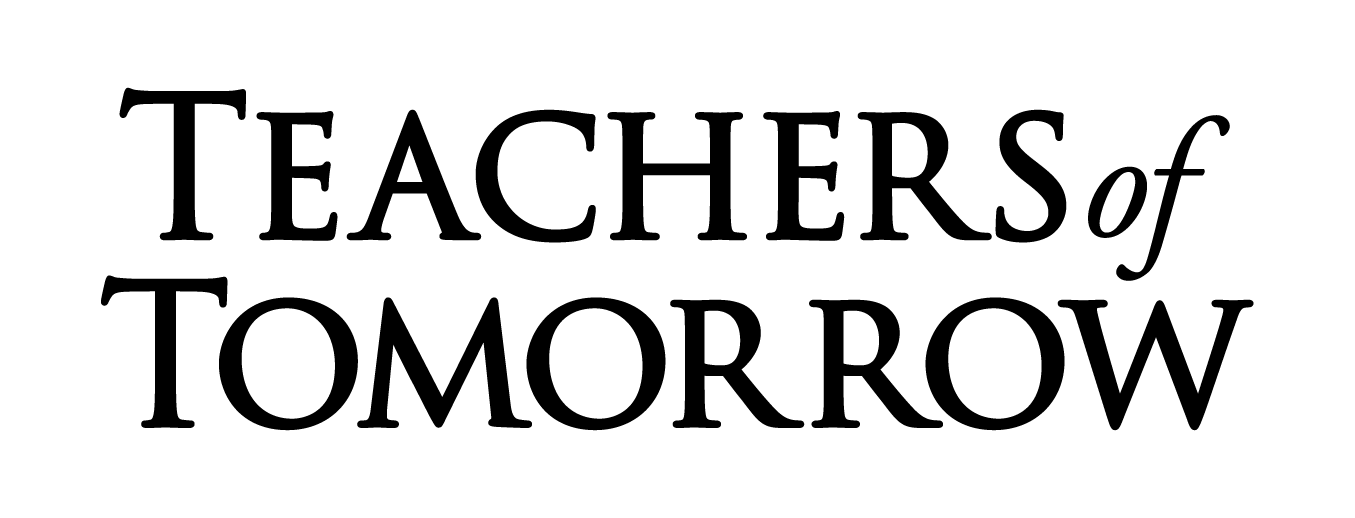Teachers play an important role in society. Their influence extends far beyond just the classroom because they help shape the future of their students and, in turn, society as a whole.
One critical aspect of becoming a teacher is obtaining the proper credentials and licensure. These qualifications are necessary to demonstrate that you have met the standards and requirements set by your state.
Educators may need clarification about the difference between teaching licenses and teaching credentials.
In this article, we’ll explain these terms and look closely into the requirements to become a teacher in the United States. We’ll especially focus on teaching licensure and teaching credentials.
Difference Between a Teaching License and a Teaching Credential
The term credentials and teaching license is used interchangeably by many state departments of education and undergraduate teaching degree programs.
The term certified teacher means someone who has gone through the process to be authorized to teach in a public school.
Some states exclusively use certification, not licensing to determine authorization. Others may sometimes grant teaching licenses in addition to having a teaching certification process.
In other cases, a teaching license may be used to grant temporary authorization when the individual has experience but lacks the relevant degree or preparatory coursework.
What is a Teaching License?
A teaching license is a legal certification that authorizes an individual to work as a teacher in a public school.
A teaching license certifies an individual to teach a specific grade level range, for example, elementary, middle, or high school. It may also specify the subject areas in which the individual is certified to teach, such as math, science, or English.
It is a requirement in most states in the United States to obtain a teaching license before you can work as a teacher. Depending on the state, a teaching license may mean the same as a teaching certificate.
What is a Licensed Teacher?
A licensed teacher is an individual who has met the qualifications and requirements set by the state to obtain a teaching license.
Every public school and many private schools in the US require you to have a teaching license or certification, or both.
Once you obtain a teaching license, you’re considered a licensed teacher and are authorized to teach in the subject area and grade level range specified on your license.
Having a teaching license ensures that teachers meet the standards and requirements for knowledge, skills, and competencies to teach in their respective subject areas and grade levels.
Types of Teaching Licenses
There are several teaching licenses available, and they vary from state to state. Let’s look at these teaching licenses and what they mean.
Temporary License for Teachers
A temporary license for teachers is a type of license that allows an individual to work as a teacher temporarily when there is an urgent need for additional teachers in a school or district.
Temporary licenses are often issued to individuals who are in the process of obtaining a standard teaching license but have not yet completed all the requirements.
They may also be issued to individuals with experience in a related field seeking to transition into teaching.
Provisional license for teachers
A provisional license for teachers is a temporary teaching license that allows individuals to teach while working towards meeting the standard teaching license requirements.
Provisional licenses are issued to educators who have completed a bachelor’s degree but have not yet completed all of the requirements for a standard teaching license. i.e., completion of a teacher preparation program or passing a state-approved teaching exam,
Provisional licenses are often used to help address teacher shortages in certain subjects or regions, and expire after three years in some states.
Initial License for Teachers
An initial license for teachers is a teaching license issued to individuals who are new to the teaching profession and have completed the requirements to begin their teaching career. It is an entry-level teaching license for classroom teachers.
The validity of the license varies from one state to the other. For instance, in Alaska, it’s valid for two years, and five in New York state.
The requirements for obtaining an initial license can vary by state but generally include completing a bachelor’s degree, completing a state-approved teacher preparation program, and passing a state-approved teaching exam.
In some states, additional requirements, such as a criminal background check or completion of specific coursework, may be necessary.
Once you obtain an initial license, you are authorized to teach in the subject area and grade level range specified on the license. During this time, you’re expected to gain experience in the classroom and meet the requirements for a professional teaching license.
Professional License for Teachers
A professional license for teachers is a teaching license that is issued to experienced teachers who have completed several years of successful teaching and have demonstrated a high level of competence and commitment to the profession.
The requirements for obtaining a professional license vary by state but generally include teaching for several months in a public school and completing state requirements.
For instance, in Connecticut, you must complete 30 months of successful teaching and state-required coursework to get a professional teaching license.
In some states, a professional license may be required for certain teaching positions, such as teaching at the middle or high school level or in certain subject areas.
A professional license may also be required for advancement to certain administrative positions, such as principal or superintendent.
What is a Teacher Certification?
A teaching certificate is an agreement with your state that you have fulfilled all standards and requirements to be a certified teacher in that state.
The term “certified teacher” means a teacher who has gone through the process to be legally authorized to teach in a public school. You receive a certificate to teach, which also acts as a license.
The certification process includes obtaining a bachelor’s degree or completing specific coursework in your subject area. Earning a certificate through a bachelor’s degree program is also known as the traditional route.
You may also be required to meet other requirements such as passing exams, obtaining a certain amount of classroom teaching experience,a criminal background check or character references.
Teacher Certification: Subject Areas and Grade Levels
As mentioned, teacher certification, also known as teacher licensure, is the credential that permits educators to instruct students at the elementary, middle school, and high school levels.
Through the certification process, teachers earn a credential to teach a particular subject area or grade level.
Elementary and Middle School Certification
Elementary and middle school certification is required for educators who want to become elementary and middle school teachers.
The certification requirements for elementary and middle school teachers vary depending on the state in which they wish to teach but generally include the following:
- A minimum of a bachelor’s degree in education or a related field
- Completion of a teacher preparation program
- Pass a state-required teacher certification exam.
In addition to these requirements, some states may require additional coursework in areas such as literacy instruction or special education. A criminal background check, including fingerprinting, may also be required in some states.
Teaching Certificates and Endorsements in Secondary Education
Teaching certification in secondary education is the certification required for educators who wish to teach in high school.
Teaching endorsement in secondary education specifies the subject area you’re allowed to teach in. For example, English, Math, or science.
The requirements to earn this certification includes a bachelor’s degree, completion of a teacher preparation program, and passing state-specific exams.
Some states may also have specific requirements for teaching students with disabilities, English language learners, or other special populations.
Teacher Certification for Specific Subject Areas
Teacher certification for specific subject areas refers to verifying that you have the qualifications, knowledge, and skills to teach a specific subject.
You’ll require a bachelor’s degree in education or a specific subject area in order to qualify. Depending on your state, you may also have to complete a student teaching program and other state-specific requirements.
Prospective teachers seeking content area certification should research the specific requirements for the state where they wish to teach.
Nationally Recognized Teacher Certification/Board Certification
Nationally recognized teacher certification, or board certification, is a voluntary certification process beyond the standard state certification requirements.
National certification is awarded by the National Board for Professional Teaching Standards (NBPTS).
To become nationally certified, teachers must:
- Have a bachelor’s degree, a valid state teaching license, and at least three years of teaching experience.
- Complete a certification process that includes submitting a portfolio of their teaching work, completing written exercises, and taking a subject-specific assessment.
- Meet high standards in their subject area, including content knowledge, teaching practice, and professional contributions.
National certification is valid for 10 years and is recognized in all 50 states. Teachers who achieve national certification may be eligible for higher salaries, leadership positions, and other professional opportunities.
Steps to Getting a Teaching License/Teaching Certificate
To obtain a teacher licensure or certificate in the US, you must follow a step by step process. We’ll cover each step next to give you a clear picture of how to proceed.
1. Decide the Subject Area
The first step you need to take is to decide where you want to teach, grade level, and specialty or subject areas. This is very important because requirements vary by state and the subject area you plan to teach.
For example, if you’re seeking certification in mathematics, you’ll need to demonstrate content knowledge and teaching strategies specific to math. In addition, some states may require additional coursework or endorsements for certain subject areas.
By deciding on the subject area before starting the certification process, you’ll ensure that you meet the specific requirements and are mentally prepared to be an effective educator in your chosen subject area.
2. Find the Right Bachelor’s Program
In most states, completion of a state-approved teacher preparation program is a requirement for obtaining teacher certification. Bachelor’s degree programs in education or related fields are often the most direct path to meeting this requirement.
It’s important to find the right bachelor’s degree program that meets the specific certification requirements of the state in which you plan to work.
Bachelor’s degree programs in education focus on giving you foundational knowledge and skills to become a teacher.
However, finding a program that offers a strong curriculum in instructional strategies, classroom management, curriculum design, and assessment methods will help prepare you to be successful in your future classroom.
3. Pass the Test and Background Checks
Passing tests such as the Praxis exams or other state-specific assessments is a requirement for obtaining teacher certification.
Praxis exams are offered by the Educational Testing Service (ETS). They’re designed to assess a teacher’s knowledge and skills in reading, math, and subject-specific knowledge needed for teaching.
Passing these tests and a background check is an important part of becoming a teacher. Background checks are conducted to ensure that teachers have not been convicted of any crimes that could pose a threat to students.
Failing to pass these requirements could limit job opportunities for aspiring teachers.
4. Take the Necessary Coursework to Get Certified
As said, different states have specific coursework requirements for teacher licensure. For example, in Florida they have the Florida Teacher Certification Exams (FTCE).
Other states also have their own tests and coursework to ensure aspiring teachers have the necessary skills and pedagogical knowledge to instruct students.
5. Apply for a Teaching License in Your State
Once you have completed all the requirements, you can apply for your teaching license through your state’s department of education.
This application may require you to submit transcripts, test scores, and any other documentation the state requires.
After submitting your application, it will be reviewed by the department of education. If everything is in order and you have met all the requirements, you will be issued a teaching license.
6. Consider Getting Your National Board Certification
The National Board certification is a symbol of excellence in teaching. It’s the highest and most respected teaching certification.
The certification process is rigorous and self-reflective and requires you to examine your teaching practice in-depth. However, once you’ve completed the process, you can easily transfer between states because the NBPTS certificate is valid in all states.
Additionally, earning your National Board certification can lead to career advancement opportunities. For example, some states offer higher salaries or leadership positions to teachers who have earned their certification.
The Benefits of a Teaching License and Teaching Certification
Meeting your states teacher licensure requirements has the following benefits:
- Legitimacy: A teaching license and certification demonstrate that you have met the minimum requirements to teach in your state, which gives you legitimacy
- Career advancement: In many states, a teaching license and certification are required for career advancement opportunities, such as becoming a lead teacher or a department head.
- Salary increase: Holding a teaching license and certification can lead to higher salaries, significantly impacting your overall compensation.
- Confidence: You are confident and well-equipped to provide high-quality instruction and improve student learning outcomes.
Alternative Path to Earning a Teaching License or Teaching Certificate
Alternative certification is available to educators who didn’t complete the teacher-training programs but hold a bachelor’s degree in the subject area they wish to teach.
To gain alternative teaching certification, you may be required to do additional coursework in education while earning 1–2 years of classroom experience under temporary licensure.
In some states, you may only be required to complete 1–2 years of graduate-level coursework to gain teacher licensure.
Accelerated Certification Programs
Accelerated certification programs for teachers are a good option for individuals who want to enter the teaching profession quickly and have a strong background in a subject area.
They’re designed to help address teacher shortages in certain subject areas or geographic regions.
Depending on the program, some coursework may be completed online or in person, and the field experience may involve supervised teaching in a classroom.
To be eligible for an accelerated certification program, you need to have a bachelor’s degree in a relevant subject area, such as math or science and meet other requirements, such as passing a subject-area exam or demonstrating subject-matter expertise.
Once you complete the program, you’re eligible for a teaching license and can begin working as a certified teacher in your state.
Private and Charter Schools
If you have a bachelor’s degree in a specific subject area that you wish to teach in such as music or math, you can get alternative teacher licensure through private or charter schools.
The option is only available in a few states. For example, Wisconsin, Nevada, New Hampshire, and Arkansas. This is because private and charter schools in these states do not always require state teacher’s certification for you to teach.
You’ll be required to have at least three years of classroom experience, after which you can pass your state teacher’s exams and apply for a regular teaching certificate.
Emergency Teaching Credentials
Emergency teaching credentials, also known as emergency certification or provisional licenses, are temporary teaching licenses granted to individuals who are not fully certified to teach but are needed to fill immediate teaching vacancies.
Emergency teaching credentials allow schools to quickly fill teacher vacancies during teacher shortages. The requirements for emergency teaching credentials vary by state, but candidates must have at least a bachelor’s degree and pass a background check.
Some states may also require candidates to have completed some coursework in education or a related field.
Transferring Teaching Credentials
Transferring teaching credentials from one state to another is a complex process because each state has its own requirements for teacher certification and licensure.
You need to research the requirements for teacher certification in the new state. You’ll normally find this information on the state’s department of education website.
Once you’ve identified the requirements, you’ll need to meet them. This may involve taking additional coursework or exams, depending on the new state’s requirements.
After that, you’ll need to submit an application for certification in the new state, along with any required documentation, such as transcripts and test scores. There may be fees associated with transferring teaching credentials, such as application fees and processing fees.
Note: The process for transferring teaching credentials can vary depending on the state, and it can take several weeks or even months to complete.
Teaching without a Teaching License
If you hold a degree without a teaching license, you cannot teach in a public school. However, there are some exceptions where you may be able to teach without a license or certification.
For example:
- Become a student teacher or volunteer for teaching roles
- Get a teaching support position in a public school
- Consider a teaching position overseas or in an international school
- Private schools and charter schools have different requirements and do not require a teaching license or certification.
- Consider substitute teaching, although you may be required to pass competency tests.
If you are interested in teaching but do not have a teaching license or certification, we recommend researching the requirements for becoming a licensed teacher in your state and consider enrolling in a teacher preparation program to gain the necessary qualifications.
Start Pursuing Your Teaching Education
Teaching is one of the noblest professions in the world. It takes a special person to be a great teacher.
Pursuing your teacher licensure is only the beginning. Great rewards and challenges await you in your future career.
If you’d like to learn more about alternative teaching certification programs, explore various options with Teachers of Tomorrow.





